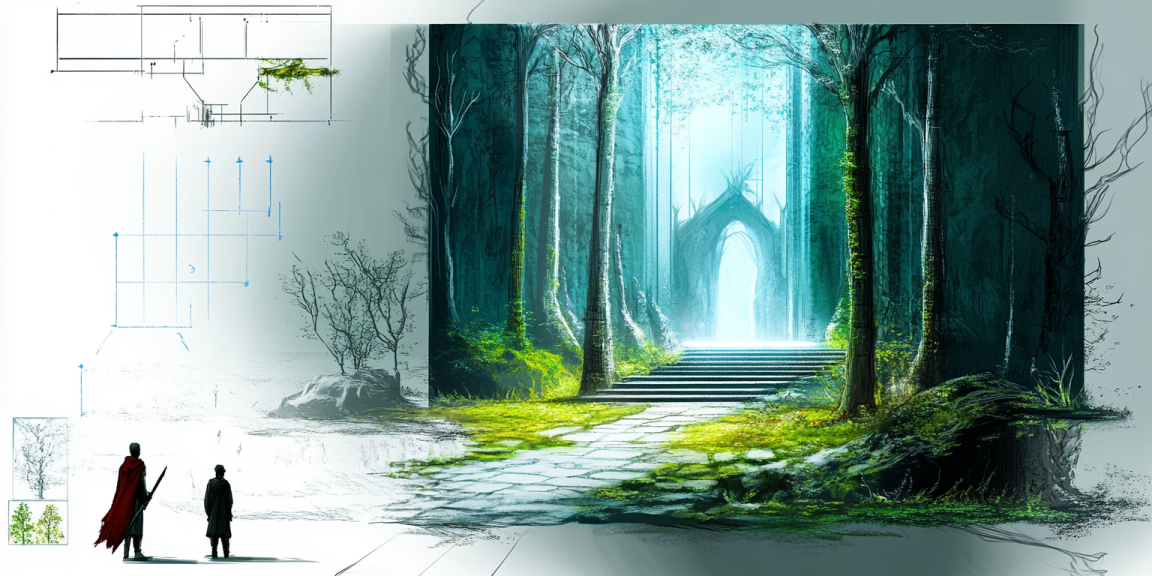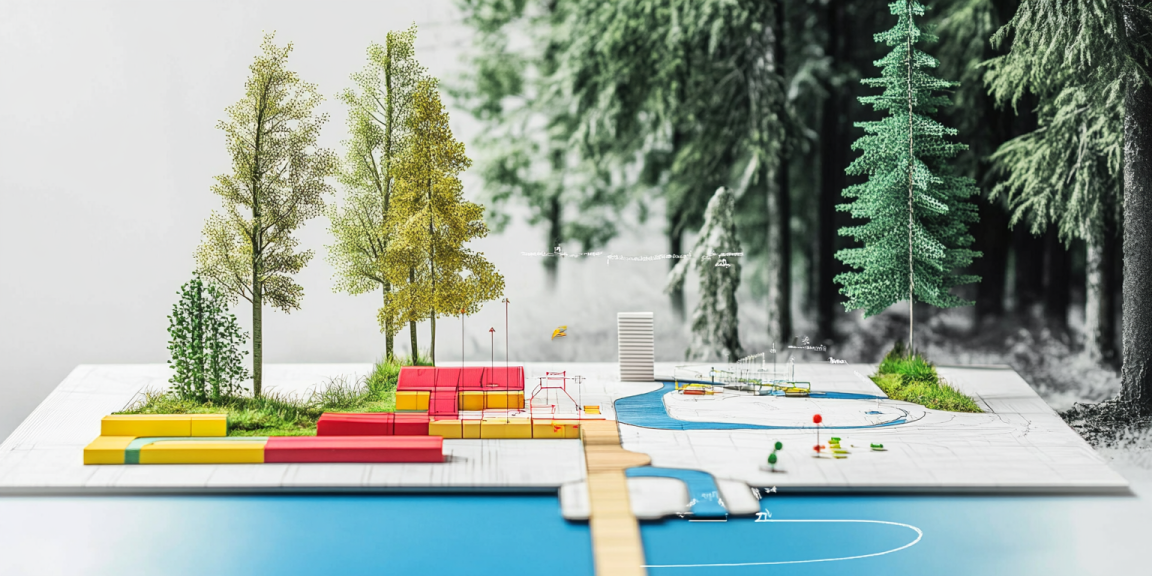As technology continues to evolve, the boundaries of user experience (UX) design are being pushed…

Visuals play a pivotal role in modern design. Whether for websites, marketing materials, or user interfaces, images and illustrations are key to capturing attention, telling a story, and creating memorable experiences. However, in a saturated digital world, creating unique visual experiences requires thoughtful strategy, creativity, and a keen understanding of design principles.
This article explores how to craft distinctive visual experiences using images and illustrations, touching on trends, tools, and actionable insights to elevate your design projects.
The Importance of Visuals in Design
1. First Impressions Matter
Humans process visuals 60,000 times faster than text, making your visual elements critical for grabbing attention within seconds.
2. Emotional Connection
Visuals evoke emotions that text alone often cannot. A powerful image or a well-crafted illustration can resonate with your audience, creating a connection that drives engagement.
3. Brand Identity
Your visual choices contribute to brand perception. Consistency in style, color, and tone helps establish a recognizable and trusted identity.
Key Principles for Unique Visual Experiences
1. Understand Your Audience
The cornerstone of any effective design is understanding your target audience. What resonates with a tech-savvy Gen Z audience might differ vastly from what appeals to a professional corporate demographic.
- Action Tip: Create user personas to guide your visual choices. Consider factors like age, interests, cultural background, and lifestyle.
2. Blend Images and Illustrations
Combining photography with custom illustrations creates a fresh and dynamic look. It allows you to strike a balance between realism and creativity.
Examples:
- Overlaying hand-drawn elements on photographs.
- Mixing 3D renders with flat design elements.
Action Tip: Use tools like Adobe Photoshop or Procreate to experiment with layering illustrations on images.
3. Embrace Storytelling
Every visual element should serve a purpose. Instead of focusing on aesthetics alone, think about the story your visuals are telling.
Techniques:
- Use sequential illustrations to guide users through a process.
- Create a visual narrative with images that evoke curiosity and excitement.
Case Study: Airbnb uses vibrant visuals to tell stories about travel and experiences, making their platform more than just a booking tool.
Harnessing the Power of Images
1. High-Quality, Authentic Photography
Stock images are convenient but can lack originality. Invest in authentic, high-quality photographs that align with your brand’s message.
Action Tip: Use platforms like Unsplash or hire a professional photographer to create custom visuals.
2. Leverage Color Psychology
Colors evoke emotions and set the tone for your visuals. A harmonious color palette can enhance the impact of your images.
Action Tip: Use tools like Coolors to generate palettes that complement your images and illustrations.
3. Play with Perspectives and Angles
Avoid conventional angles. Experiment with close-ups, aerial views, or tilted frames to make your images more engaging.
Example: An e-commerce site could showcase products with macro photography, emphasizing textures and details.
Elevating Design with Illustrations
1. Custom Illustrations for Personalization
Illustrations provide endless creative possibilities. Custom designs can add a personal touch to your brand.
Trends in Illustrations:
- Flat Design 3.0: Minimalistic with added depth and gradients.
- Scribble Effects: Hand-drawn elements that add personality.
- 3D Illustrations: For immersive, futuristic designs.
Action Tip: Use tools like Illustrator, Affinity Designer, or Figma to craft unique illustrations.
2. Interactive and Animated Illustrations
Adding motion to illustrations brings them to life, enhancing user engagement.
Examples:
- Loading animations with playful characters.
- Interactive infographics that respond to user clicks.
Action Tip: Tools like LottieFiles or Rive can help integrate animations seamlessly.
3. Incorporate Cultural Elements
Reflecting cultural or local aesthetics in your illustrations can create a deeper connection with your audience.
Example: A tourism website could use illustrations inspired by local art styles, such as geometric patterns or traditional motifs.
Trends in Visual Design for 2024
1. Surrealism Meets Realism
Combining real-life photography with surreal illustrations is gaining popularity. It creates a dreamlike yet relatable experience.
Examples:
- A landscape photo with floating, glowing geometric shapes.
- Portraits enhanced with colorful, abstract overlays.
2. Gradients and Vibrant Hues
Vivid, colorful gradients continue to dominate visual design, adding energy and modernity.
Examples:
- Instagram’s iconic gradient background.
- Gradient overlays on minimalist illustrations.
3. Organic Shapes and Patterns
Designs inspired by nature and organic forms feel approachable and calming.
Examples:
- Watercolor-style illustrations.
- Fluid, asymmetrical shapes.
4. AI-Generated Visuals
AI tools are revolutionizing how visuals are created, offering unique and unexpected results.
Action Tip: Explore tools like DALL·E or Runway ML to experiment with AI-generated images.
Balancing Creativity and Functionality
While creating unique visuals is essential, they should never compromise user experience (UX).
1. Optimize for Speed
Heavy images and animations can slow down your website, leading to higher bounce rates.
Action Tip: Compress images using tools like TinyPNG and optimize animations with lightweight formats like SVG or Lottie.
2. Maintain Accessibility
Ensure that all visual elements are accessible to all users.
Action Tip:
- Add alt text to images for screen readers.
- Ensure sufficient contrast between text and backgrounds.
3. Consistency is Key
Your visual style should be cohesive across all platforms, from websites to social media.
Action Tip: Develop a design system or style guide to ensure uniformity in colors, typography, and illustration styles.
Tools to Elevate Your Visuals
- Adobe Creative Suite: Industry-standard tools for images and illustrations.
- Figma: For collaborative design projects.
- Canva: Great for beginners creating quick designs.
- Procreate: Ideal for custom, hand-drawn illustrations.
- Unsplash/Pexels: High-quality, free stock images.
Final Thoughts
Creating unique visual experiences with images and illustrations is about more than aesthetics; it’s about crafting meaningful interactions that resonate with your audience. By combining creativity with strategy, you can elevate your brand and make a lasting impression in a crowded digital space.
Invest in high-quality visuals, embrace innovative techniques, and always prioritize user experience. When done right, your visuals will not only capture attention but also build trust and loyalty.



